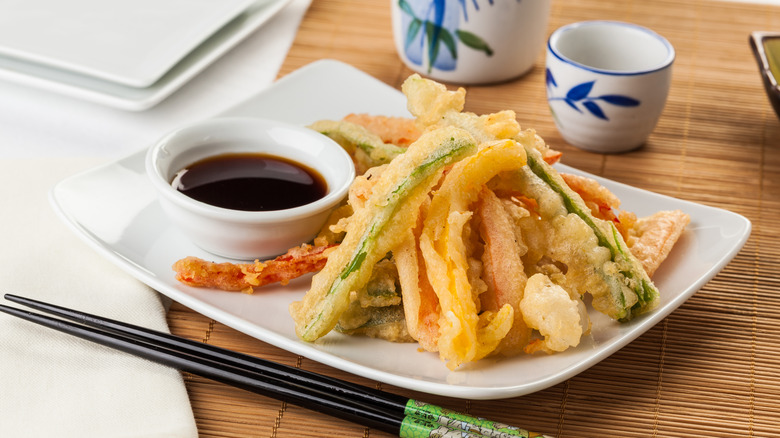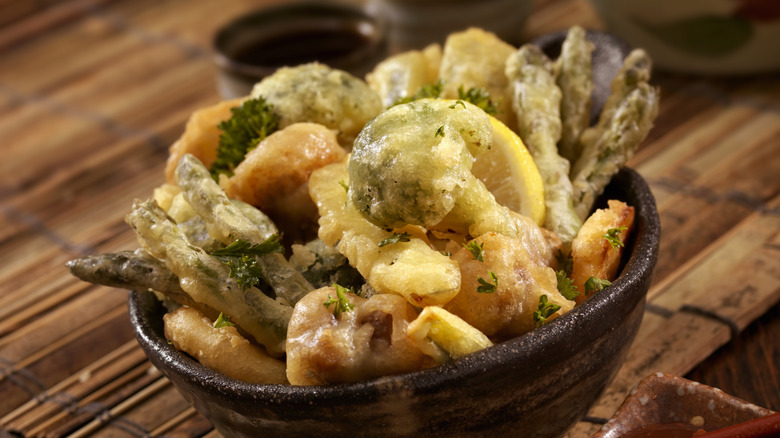What Are The Best Vegetables For Making Tempura?
Bright, beautiful vegetables picked at their peak, dipped in batter, fried until crispy, and served with an umami-rich dipping sauce, tempura is a rare delight that doesn't weigh you down the way deep-fried foods often do. While it seems like you can fry anything in tempura batter to make it fantastic, certain vegetables are better suited for this irresistible dish.
To help you figure out which veggies are best to turn into light, crispy tempura if you're making some at home, Chowhound spoke exclusively to Billy Wang, the owner of Sanuki Udon, a Japanese restaurant in Manhattan that specializes in build-your-own-bowls of udon. Along with a wide selection of udon, rice dishes, and onigiri, his restaurant offers an array of tempura — from tofu and eggplant to Japanese squash and yam — so he knows his stuff about the tasty dish.
Wang offered us his advice on the vegetables that are optimal for making tempura, noting ones that work well from both a flavor and texture perspective. "Vegetables like sweet potatoes, pumpkins, and mushrooms are excellent choices because they have moderate water content, allowing them to maintain their fresh sweetness after frying without being overly greasy," he says. "The high starch content in taro and lotus root also contributes to a crispier texture."
The history of veggie tempura
Food historians generally agree that frying foods in hot oil was a culinary technique introduced to Japan by Portuguese traders sometime in the 16th century. During Lent and other fasting periods mandated by the Catholic Church, as an alternative to eating meat, the Portuguese would shape vegetables into tiny pieces of fish and deep fry them in a light batter. When trade was established between the two nations in the mid-1500s, the Japanese learned about the art of these deep-fried foods from the Portuguese and made it their own, creating tempura.
The Japanese took deep frying and honed it into a culinary art form, with delicately cut vegetables and shiso leaves that seem frozen in time. Vivid in both flavor and appearance, low-moisture vegetables as well as proteins like shrimp and tofu are coated in a light batter made from flour, egg, and cold water (although you could also try using club soda to amp up the fried dish), fried until crispy, and served with a rich dipping sauce called tentsuyu, made from dashi, mirin, and soy sauce. Even centuries later, it's still one of the best ways to eat your veggies!

